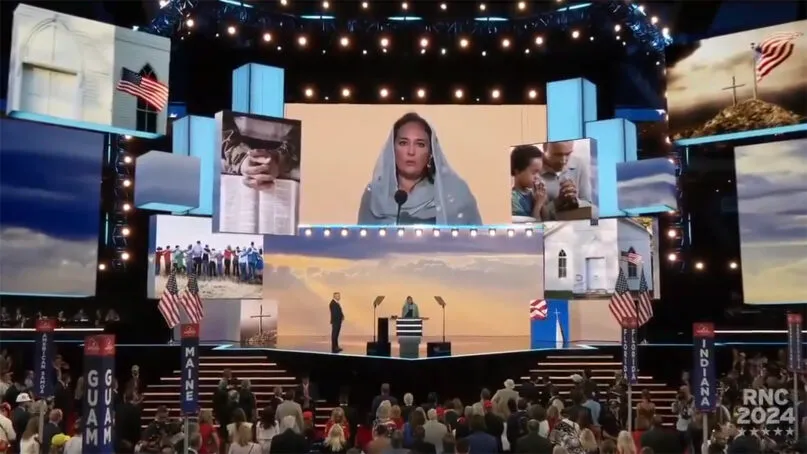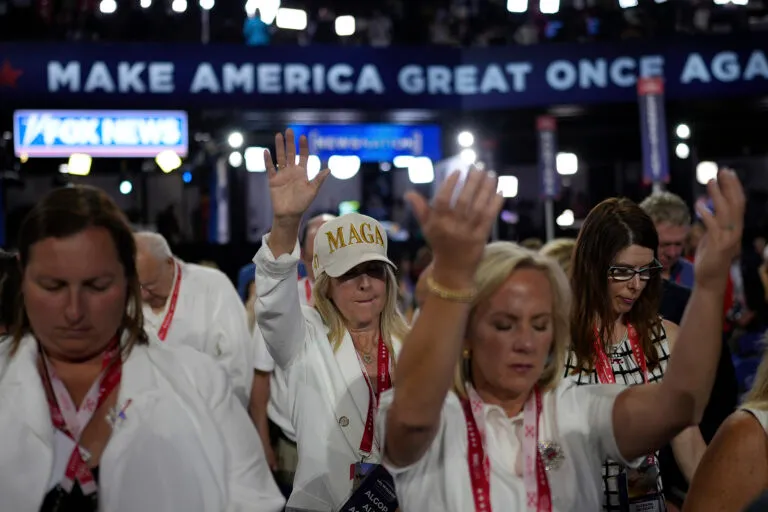Introduction
On Monday, July 15, Harmeet Kaur Dhillon, a California national committeewoman, offered a Sikh prayer, known as the Ardas, at the Republican National Convention (RNC). The event stirred controversy among some conservative figures, but it also highlighted a long-standing tradition of including diverse religious voices at political conventions.

The Controversy
Dhillon’s prayer sparked criticism from various quarters, including some mainstream conservatives and white supremacists. Notably, Thomas Kidd, a professor of religious history at Baylor University, argued that allowing prayers from multiple faiths could imply that all religions are equally valid, a notion he suggested undermines traditional values.
In response to the backlash, Dhillon took to social media, using the Southern phrase “Bless your hearts” to dismiss her critics while blocking several commentators from her feed. The criticism of Dhillon’s prayer underscores ongoing debates about religious diversity and secularism in American politics.
Historical Context of Religious Diversity at Conventions
The inclusion of diverse religious voices at party conventions is not a new phenomenon. This tradition dates back over a century. In 1896, Rabbi Samuel Sale offered an invocation at the Republican Convention in St. Louis, a decision born out of political compromise between Catholic and Protestant factions.
Since then, both major parties have regularly featured representatives from various faiths. At the 2012 GOP convention, for example, prayers were offered by a Sikh cleric, a Greek Orthodox archbishop, and a Hispanic evangelical pastor, among others. The inclusion of Imam Izak-EL Mu’eed Pasha’s invocation in 2004, which featured readings from the Quran, and Sajid Tarar’s 2016 benediction discussing the Prophet Muhammad, further exemplify this tradition.
Democratic Conventions and Religious Representation
The Democratic Party has similarly embraced religious diversity. The 2000 Democratic National Convention (DNC) featured an invocation from the head of an Islamic center, and subsequent conventions continued this trend with prayers from various faith leaders. The 2020 DNC, for instance, began with an interfaith service and included significant focus on Catholic faith, reflecting then-candidate Joe Biden’s religious background.
Bipartisan Presence of Religious Leaders
Faith leaders have demonstrated bipartisan support at conventions. Greek Orthodox clerics have appeared at both Republican and Democratic conventions, while prominent figures like Billy Graham and Cardinal Timothy M. Dolan have prayed at conventions for both parties. Dolan’s prayers, though sometimes controversial, emphasize the role of religious freedom and moral values in American political life.
The Impact of Diverse Religious Voices
The tradition of including diverse religious voices at conventions serves multiple purposes. It reflects the multicultural nature of American society and aims to represent a broad spectrum of beliefs. However, such inclusions can also be contentious, with some viewing them as symbolic gestures rather than substantive commitments to religious pluralism.
Dhillon’s experience highlights the tension between maintaining traditional values and embracing a diverse representation of faiths in public life. As the debate continues, the role of religious diversity in American political conventions remains a significant and evolving aspect of the political landscape.
FAQ
1. Why was Harmeet Kaur Dhillon’s prayer controversial?
Dhillon’s Sikh prayer faced criticism from some conservative figures and white supremacists, who argued that including diverse religious voices at the convention could imply that all religions are equally valid, which some viewed as undermining traditional values.
2. What is the historical significance of religious prayers at conventions?
The inclusion of diverse religious voices at conventions dates back to at least 1896, reflecting political compromises and a long-standing tradition of representing various faiths in American political life.
3. How have both major parties incorporated religious leaders in their conventions?
Both major parties have featured a wide range of religious leaders at their conventions. Examples include Sikh clerics, imams, rabbis, and evangelical pastors, demonstrating a commitment to representing diverse faith traditions.
4. How do Democratic and Republican conventions differ in their approach to religious diversity?
Both parties include diverse religious voices, but their approach and focus can vary. The Democrats often emphasize interfaith and inclusive services, while Republicans have featured a variety of religious leaders reflecting different traditions.
5. What role do faith leaders play in conventions?
Faith leaders contribute to conventions by offering prayers and reflections that address moral and ethical themes, reinforcing the importance of religious freedom and values in public life.


